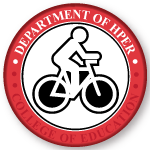Author ORCID Identifier
Document Type
Article
Publication Date
4-26-2016
Publication Title
Journal of Exercise Rehabilitation
Volume
12
Issue
2
First Page
113
Last Page
117
Abstract
Exercise mediates an excessive free radical production leading to oxidative stress (OS). The body has natural antioxidant systems that help decrease OS, and these systems may be enhanced with exercise training. However, only a few studies have investigated the differences in resting OS and antioxidant capacity (AOC) between aerobically trained athletes (ET), anaerobically trained athletes (RT), and untrained individuals (UT). Therefore, this study sought to investigate the resting and postexercise OS and AOC in ET, RT, and UT. Sixty healthy young males (26.6±0.8 yr) participated in this study. Subjects were divided into three groups, ET, RT, and UT by distinct training background. Resting plasma malondialdehyde (MDA) and protein carbonyls (PC) were not significantly different in ET, RT, and UT. However, MDA and PC were significantly increased following a graded exercise test (GXT) in UT but not in ET and RT. Resting total antioxidant capacity (TAC) levels and TAC were not different in ET, RT, and UT. Interestingly, TAC levels significantly decreased after the GXT in all groups. Additionally, UT showed lower post-exercise TAC levels compared to ET and RT. These results showed that ET, RT, and UT have similar OS and AOC at rest. However, both ET and RT have greater AOC against exercise mediated OS compared to UT. These findings may explain, at least in part, why both aerobic and anaerobic types of exercise training improve redox balance. However, it appears there is no specific exercise type effect in terms of redox balance.
Recommended Citation
Park, Song-young and Kwak, Yi Sub, "Impact of aerobic and anaerobic exercise training on oxidative stress and antioxidant defense in athletes" (2016). Health and Kinesiology Faculty Publications. 84.
https://digitalcommons.unomaha.edu/hperfacpub/84
Creative Commons License

This work is licensed under a Creative Commons Attribution-Noncommercial 4.0 License


Comments
This is an Open Access article distributed under the terms of the Creative Commons Attribution Non-Commercial License
DOI: https://doi.org/10.12965/jer.1632598.299